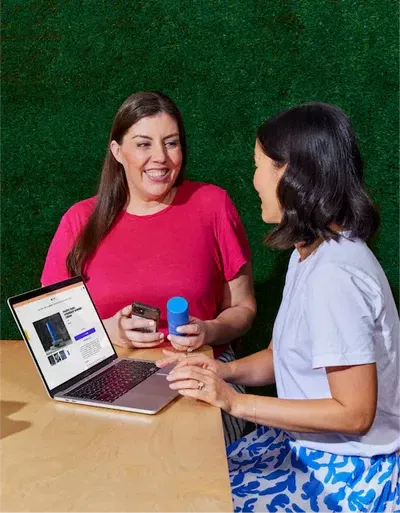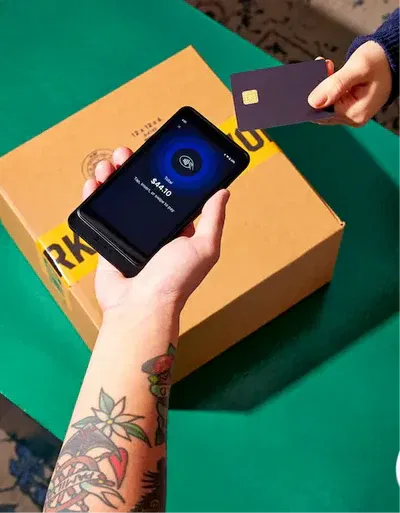A Beginner’s Guide to Basic Website Design That Works
🚀 Basic Website Design: A Complete Guide for Beginners and Entrepreneurs (2025)
In today’s digital world, basic website design isn’t just a techy luxury—it’s a vital necessity. Whether you’re a freelance graphic designer, a small business owner, or someone with a passion project, your website is your front door to the internet.
So what makes a website “basic”? Does “basic” mean boring or less functional? Absolutely not. In fact, mastering the basic website design principles is what separates confusing, clunky sites from clear, user-friendly experiences.
In this in-depth guide, you’ll discover the core elements of basic website design, how to build your own site from scratch or using templates, and why simplicity often wins when it comes to web design. Let’s get started.
| Template Name | Best For | Source | Mobile Responsive | SEO Ready | Customization Level | Free/Paid |
|---|---|---|---|---|---|---|
| Miniport | Personal Portfolios | HTML5 UP | ✅ | ✅ | 🔧 High | Free |
| Creative | Agencies, Freelancers | Templatemo | ✅ | ✅ | 🔧 High | Free |
| Glint | Freelancers, Startups | Colorlib | ✅ | ✅ | 🔧 Medium | Free |
| BizPage | IT & Consulting Businesses | BootstrapMade | ✅ | ✅ | 🔧 High | Free |
| AppLab | App Launch/Landing Pages | Colorlib | ✅ | ✅ | 🔧 Medium | Free |
| Infinity | Clean, Minimal Websites | HTML5 UP | ✅ | ✅ | 🔧 Medium | Free |
| SoftLand | SaaS & Software Products | BootstrapMade | ✅ | ✅ | 🔧 High | Free |
| Personal | Resume & Bio Sites | Templatemo | ✅ | ✅ | 🔧 Medium | Free |
| HostPro | Web Hosting Services | Colorlib | ✅ | ✅ | 🔧 Medium | Free |
| Landing | Lead Gen Landing Pages | FreeHTML5.co | ✅ | ✅ | 🔧 Medium | Free |
| NeoSoft | Tech Product Demos | HTML5 UP | ✅ | ✅ | 🔧 Low | Free |
| StartHub | Startup Showcases | Colorlib | ✅ | ✅ | 🔧 High | Free |
| DesiTech | IT & Tech Services | Templatemo | ✅ | ✅ | 🔧 High | Free |
| QuickStart | Launch Quickly, One Page | BootstrapMade | ✅ | ✅ | 🔧 Medium | Free |
| Slick | Modern Minimal Business | HTML5 UP | ✅ | ✅ | 🔧 Low | Free |
📌 What Is Basic Website Design?
Basic website design refers to the foundational layout and structure of a website. This includes elements such as:
-
Navigation menus
-
Header and footer design
-
Page layouts (home, about, contact)
-
Fonts and colors
-
Mobile responsiveness
While it may sound minimalist, a good basic website design ensures that your site loads quickly, functions across devices, and delivers a strong user experience.
When done right, basic web page design helps drive conversions, improve SEO, and build trust with visitors.
👉 Want to see examples? Explore basic web templates here and HTML design layouts.
🎯 Who Is This Guide For?
This article is crafted for:
-
U.S.-based young professionals, entrepreneurs, and creatives
-
People launching personal portfolios or service-based websites
-
Business owners seeking cost-effective ways to get online
-
Bloggers looking to build an audience from scratch
Whether you’re tech-savvy or brand new to the scene, basic website design principles will serve you well.
📈 Why Basic Website Design Matters More Than Ever
Here’s a stat to chew on: Users form an opinion about your website within 0.05 seconds. That’s less than the blink of an eye.
And with over 50% of all web traffic in the U.S. now coming from mobile devices, your site needs to work everywhere.
A well-executed basic website design accomplishes the following:
-
Loads quickly, improving bounce rate and SEO
-
Navigates intuitively, which keeps users engaged
-
Looks good on any device, from phones to desktops
-
Communicates clearly, which increases conversions
So yes, simplicity really is the ultimate sophistication.
🧱 The Core Elements of Basic Website Design
Let’s break it down. Every successful basic web page design includes the following:
1. Header
-
Logo or site name
-
Navigation menu
-
CTA button (e.g., “Contact” or “Get Started”)
2. Hero Section
-
A compelling headline
-
One-line value proposition
-
Optional: image or illustration
3. Main Content Area
-
About section
-
Service or product listing
-
Testimonials or case studies
4. Footer
-
Contact details
-
Social media links
-
Copyright + legal links
Here’s a visual layout (Insert image of a basic website wireframe here).
🛠️ Tools to Build a Basic Website Design
If you want to build a website with basic website design features, here are your top tools:
| Tool | Type | Price | Best For |
|---|---|---|---|
| WordPress.org | CMS | Free | Blogs, small business websites |
| Wix | Drag-and-drop | Freemium | Portfolios, personal sites |
| Squarespace | Website Builder | Paid | Designers, small businesses |
| Webflow | Visual CMS | Freemium | Designers, developers, freelancers |
| GitHub Pages | Hosting | Free | Developers and coders using static HTML/CSS |
Want to skip the builder? Use HTML5 UP or Templatemo for free HTML and CSS templates with simple layout structures.
✏️ How to Design a Basic Web Page Step-by-Step
Creating a basic website design from scratch doesn’t have to be overwhelming. Here’s a step-by-step roadmap:
Step 1: Choose Your Platform
Decide between WordPress, a builder like Wix, or hand-coding with HTML/CSS.
Step 2: Select a Template
Pick a minimalist, responsive theme that fits your purpose. Avoid over-designed templates. Simpler is better.
Step 3: Set Up Key Pages
Start with:
-
Homepage
-
About
-
Services
-
Contact
Each page should follow basic layout principles: clean headings, readable text, and functional navigation.
Step 4: Customize Text and Images
Focus on clarity. Don’t stuff your pages with too much jargon or visual clutter.
Step 5: Make It Responsive
Use CSS media queries or a responsive template. Over 60% of U.S. traffic comes from mobile!
Step 6: Test It
Use tools like:
💡 Pro Tips for a Great Basic Website Design
-
Limit your fonts: Use one or two clean fonts max.
-
Use whitespace: Give elements breathing room.
-
Optimize for speed: Compress images and avoid large scripts.
-
Stay accessible: Use proper alt tags and contrast ratios.
-
Keep colors consistent: Stick to your brand palette.
For inspiration, browse this gallery of free website designs.
📊 Basic vs Advanced Website Design (Comparison Table)
| Feature | Basic Website Design | Advanced Website Design |
|---|---|---|
| Complexity | Low | High |
| Cost | Free or Low | $$$ – $$$$ |
| Learning Curve | Beginner-friendly | Intermediate to Expert |
| Custom Code Required | Minimal (HTML/CSS) | Advanced (JS, PHP, etc.) |
| Maintenance | Easy | Often requires a developer |
| Best For | Startups, personal blogs, small biz | eCommerce, apps, enterprise sites |
🔥 SEO Tips for Basic Website Design
To help your basic website design rank well in search engines:
-
Include your main keyword (like basic website design) in page titles and H1 tags
-
Use alt-text for all images
-
Internal link to other relevant blog posts
-
Keep page load under 3 seconds
-
Write content-rich pages (like this one 😎)
Try a free SEO tool like Ubersuggest or Yoast SEO for on-page optimization.
🧩 Basic Web Page Design Templates You Can Use Right Now
Here are some free templates perfect for basic website design:
| Template Name | Source | Ideal For | Mobile-Responsive | Customizable |
|---|---|---|---|---|
| Miniport | HTML5 UP | Portfolios | ✅ | ✅ |
| Creative | Templatemo | Agencies | ✅ | ✅ |
| Glint | Colorlib | Freelancers | ✅ | ✅ |
Explore even more basic web page design options from trusted sources like FreeHTML5.co.
💬 Common Mistakes to Avoid
Avoid these traps that weaken your basic website design:
-
🚫 Cluttered layouts with too many elements
-
🚫 Poor color contrast making text unreadable
-
🚫 Missing CTAs (Call-to-Actions)
-
🚫 Lack of mobile testing
-
🚫 No meta descriptions or page titles
Remember, a basic website design should be easy to use and visually clear—not boring!
📣 Real-World Use Cases of Basic Website Design
-
Personal Brand Site: Showcasing a creative portfolio using a one-page scroll layout.
-
Consulting Service Page: Clean homepage + contact form for lead generation.
-
Nonprofit Landing Page: Simple donation button + mission statement.
Want to see live examples? Check out this minimalist IT services site template.
💡 Frequently Asked Questions About Basic Website Design
Whether you’re starting your first personal site or launching a small business online, questions about basic website design are both common and crucial. Below, we’ve compiled and answered the top 15 frequently asked questions based on what our U.S. customers ask most. Each response is designed to help you understand essential design principles, tools, and strategies—all while ensuring your site looks polished and performs well.
1. What is basic website design and why does it matter for beginners?
Basic website design refers to the foundational elements that make a website functional, visually clear, and easy to navigate. For beginners, it’s the best place to start. It strips away the complex layers of custom development and focuses on what truly matters: usability, layout, and simplicity.
A good basic web page design includes a clean layout, clear navigation, responsive design, and minimal distractions. These essentials help users find what they’re looking for quickly and keep your site looking professional, even without flashy animations or advanced coding.
2. How does basic website design improve user experience (UX)?
When visitors land on your website, their attention span is just a few seconds. A cluttered or confusing site will drive them away. That’s where basic website design shines—it’s focused on clarity, not complexity.
Key UX benefits of a well-executed basic web page design include:
-
Intuitive menus that are easy to follow
-
Consistent layout across all pages
-
Mobile responsiveness for on-the-go browsing
-
Clean visuals and clear call-to-action buttons
These elements reduce bounce rates and improve session times, both of which are important for SEO.
3. What pages should a basic website include?
At a minimum, a standard basic website design should include the following pages:
-
Home Page: A clear snapshot of your site and what you offer.
-
About Page: Information about you or your business.
-
Services or Products Page: What you offer and how it helps.
-
Contact Page: Email, phone number, or contact form.
Optional but helpful additions:
-
FAQ Page (like this one)
-
Blog Page for content marketing
-
Testimonials Page to showcase social proof
All these fit seamlessly within the framework of basic web page design, ensuring smooth navigation and faster loading.
4. Can I build a professional-looking site using basic website design?
Yes, absolutely. With today’s tools and templates, even a basic website design can look incredibly polished and trustworthy. You don’t need animation-heavy pages or 3D interactions to build credibility. In fact, minimal designs often look more modern and professional.
Web templates from platforms like Templatemo, Colorlib, and HTML5 UP offer free, responsive layouts that align with basic web page design principles and are used by startups and freelancers worldwide.
5. Is basic website design good for SEO?
Yes. One of the biggest advantages of basic website design is its SEO-friendliness. Clean code, fast loading speeds, mobile responsiveness, and clear HTML structure all contribute to better rankings on Google.
Here’s how:
-
Fewer scripts mean quicker load times
-
Clean HTML is easier for search engines to crawl
-
Simple navigation improves internal linking
-
Lightweight design reduces bounce rate
Pair your basic web page design with strategic keyword placement, meta tags, and optimized images, and you’ll be in good shape.
6. What’s the difference between basic website design and advanced design?
| Feature | Basic Website Design | Advanced Website Design |
|---|---|---|
| Learning Curve | Easy | Moderate to Difficult |
| Tools Needed | Free builders or HTML templates | Advanced design software or custom code |
| Ideal For | Beginners, portfolios, small businesses | Enterprises, web apps, eCommerce platforms |
| Design Elements | Simple structure, limited animation | Dynamic content, animation, interactivity |
| Cost | Free to low | Moderate to high |
If you’re new or have limited budget/resources, go with basic website design first. You can always upgrade later.
7. What tools or platforms are best for creating a basic website?
There are several beginner-friendly platforms and tools for implementing basic website design:
-
Wix: Drag-and-drop builder with free templates.
-
WordPress: Open-source CMS, widely used and customizable.
-
Squarespace: Visual editor with stunning built-in layouts.
-
Webflow: Designer-grade tools for non-coders.
-
GitHub Pages: For developers using static HTML/CSS templates.
You can also try downloading a basic website design template from BootstrapMade or FreeHTML5.co for a more hands-on approach.
8. What layout options work best for a basic web page design?
Layout is everything. Here are some go-to layouts for basic web page design:
-
One-page layout: Great for portfolios or personal bios.
-
F-layout: Mimics natural eye scanning patterns; best for blogs.
-
Z-layout: Works well for conversion-focused home pages.
-
Grid layout: Useful for product showcases or image galleries.
All these layouts prioritize simplicity, hierarchy, and flow—pillars of any strong basic website design.
9. How important is mobile responsiveness in basic website design?
Incredibly important. Over 60% of U.S. internet users browse on mobile devices. If your basic website design doesn’t scale and display correctly on phones or tablets, you risk losing more than half your audience.
Choose a mobile-first design or responsive template from the start. All modern basic web page design templates from reputable sources come mobile-optimized by default.
10. How do I optimize images for a basic website?
Image optimization keeps your site fast without compromising visuals. Here’s what you should do:
-
Use tools like TinyPNG to compress images
-
Use
.webpformat when possible -
Add descriptive alt-text (improves SEO and accessibility)
-
Keep image dimensions appropriate for display size
Even within basic website design, visuals play a big role—so they need to be efficient, not bulky.
11. Are there any free templates I can use for basic website design?
Absolutely. Here are a few favorites:
-
Miniport – HTML5 UP: Great for portfolios
-
Creative – Templatemo: Clean agency layout
-
SoftLand – BootstrapMade: Ideal for SaaS
-
Landing – FreeHTML5.co: Simple landing page setup
These templates follow basic website design principles and are easy to adapt to your content.
12. How often should I update a basic website?
Maintenance matters, even for a basic site. Aim to:
-
Update content every 2–4 weeks (e.g., blog, services)
-
Check for broken links monthly
-
Refresh design every 1–2 years or as branding evolves
-
Back up your site weekly or after changes
Keeping your basic web page design fresh not only improves user experience but helps with long-term SEO ranking.
13. Can I sell products on a website built with basic website design?
Yes, but with some limitations. If you’re using basic website design without eCommerce platforms like Shopify or WooCommerce, you’ll need to:
-
Manually integrate PayPal or Stripe payment buttons
-
Use third-party plugins or embed forms
-
Link out to a platform like Etsy or Gumroad
For a small number of products or services, a simple setup works well. For large catalogs, consider combining basic web page design with a full CMS or eCommerce tool.
14. What are the top mistakes people make with basic website design?
Here are the most common pitfalls:
-
❌ Using too many fonts or colors
-
❌ Overcrowding the homepage
-
❌ Ignoring mobile design
-
❌ Skipping call-to-action buttons
-
❌ Neglecting to compress images
All these mistakes undermine the user experience. Remember: with basic website design, clarity is king.
15. How can I learn basic website design without a tech background?
You don’t need a degree to start. Here are some great resources:
-
YouTube tutorials on “basic web page design”
-
Hands-on practice with free templates from Templatemo
Practice is the best teacher. Download a basic website design template and start editing—change headings, swap images, and move elements around to build your confidence.
🔚 Final Thoughts
If you’re starting your digital journey, learning and implementing basic website design is the smartest move you can make. It’s cost-effective, scalable, and easy to maintain—even for those with zero coding experience.
So whether you’re a student, freelancer, or small business owner in the U.S., this guide is your roadmap to building a beautiful, functional, and high-ranking site.
Now it’s your turn—what kind of website are you planning to build?
Let us know in the comments, or explore our free template gallery here to get started.




